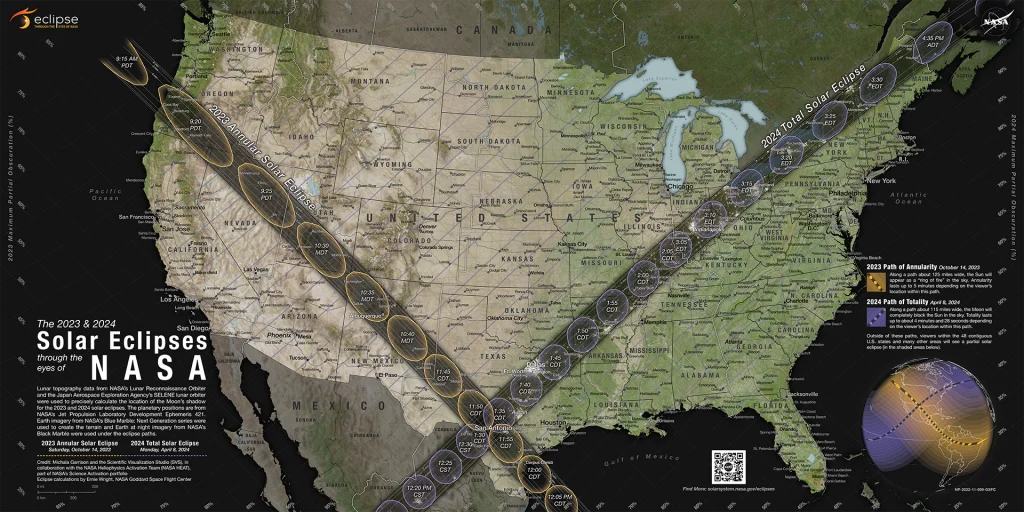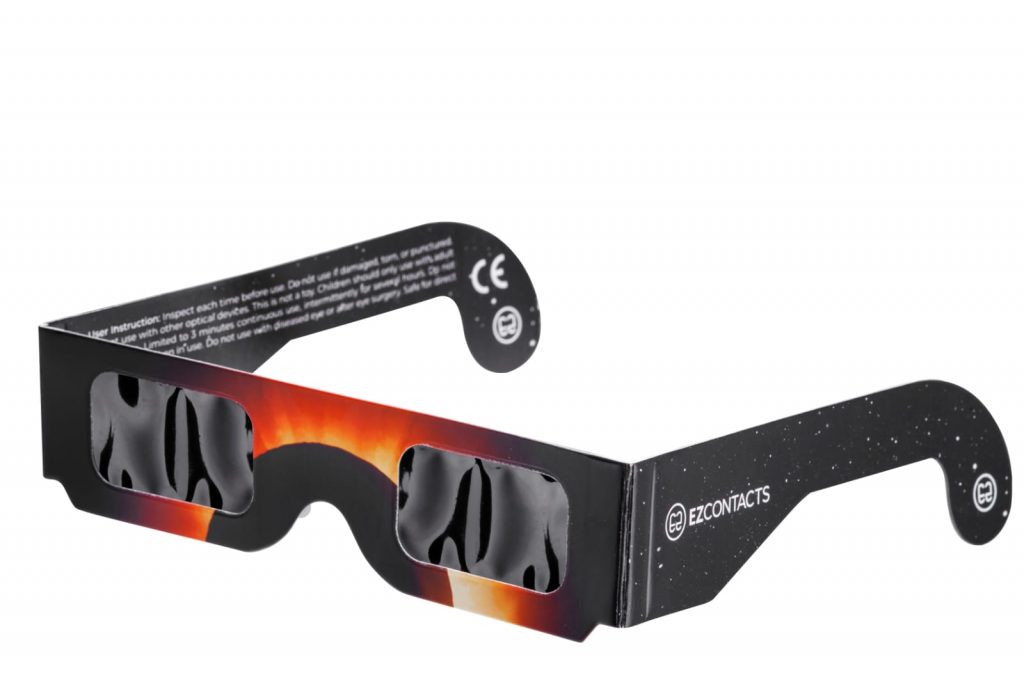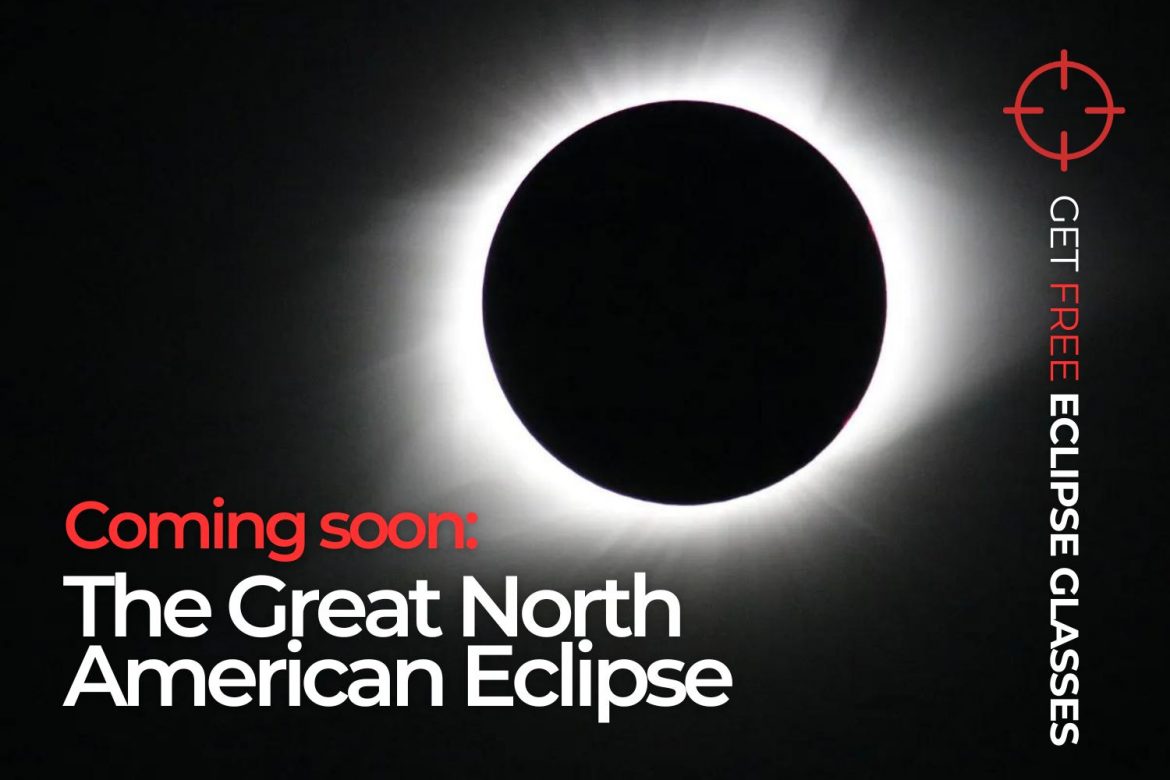
On April 8th, 2024, North America will witness an awe-inspiring celestial event: the Great North American Eclipse. A total solar eclipse, the moon will completely block the sun. It won’t happen again for more than 20 years.
You’ll want to see it if you can, but of course, you need to keep your eyes safe. So, in this article, we’ll delve into the details of the eclipse, its path across North America, and also provide essential information on how to observe it safely.
What’s a total eclipse?
Last October, many witnessed an annual solar eclipse. As we explained then, an annual solar eclipse occurs when the moon covers the central part of the sun, leaving a ring-like appearance around the edges.
The Great North American Eclipse will be a total eclipse. A total eclipse happens when the moon’s apparent size is large enough to completely block the sun’s bright light.
During totality, the day turns into a brief twilight. Totality will last for more than four minutes in certain locations. The darkness will then be followed by a breathtaking display of the solar corona, a wispy, white ring of plasma surrounding the sun.
Total eclipses don’t happen often
A total eclipse occurred in 2017. However, the Great North American Eclipse of 2024 will be quite different:
Wider path—The path of the 2024 eclipse will be wider, ranging between 108 and 122 miles in width. In 2017, it ranged between 62 and 71 miles wide. This means more people can experience the total eclipse.
The 2024 eclipse will also pass over more densely populated areas, making it accessible to an estimated 31.6 million people living in the path of totality.
Duration—The total phase of the 2024 eclipse will last longer, with totality lasting up to 4 minutes and 28 seconds in some locations, compared to a maximum of 2 minutes and 42 seconds during the 2017 eclipse.

You can see this map in greater detail here.
The eclipse’s path, also known as the path of totality, will stretch across a narrow band of North America. It will begin over the Pacific Ocean and make landfall on the coast of Mexico. The path will then travel northeast across the United States, passing through Texas, Oklahoma, Missouri, Illinois, Kentucky, Tennessee, Georgia, North Carolina, and Maine. Finally, it will exit North America over Canada.
See it safely with certified solar eclipse glasses
Looking directly at the sun, even during a partial eclipse, can cause permanent eye damage. The sun’s intense light can burn the retina and cause vision loss.
If you’re fortunate enough to be located within the path of totality (or plan to travel there), planning and preparation are key. Let’s explore safe viewing techniques for the Great North American Eclipse:
The safest way to directly view the eclipse is through specially designed eclipse glasses with certified filters. These filters meet international safety standards, such as ISO 12312-2, and block out harmful ultraviolet and infrared radiation while allowing a safe amount of visible light through.

Eclipse glasses are free from EZContacts!
Through March 31, a pair will be shipped with every order.
It’s important to inspect your eclipse glasses carefully before using them. Ensure they are free of scratches, cracks, or any pinholes. And remember: never look through unfiltered sunglasses, regular eyeglasses, telescopes, binoculars, or any camera equipment to view the eclipse.
Solar projection techniques
You can witness the eclipse without looking directly at the sun. A couple of options for doing so include making a pinhole projector or a box pinhole projector. These techniques call for using common household items as the supplies.
Get detailed instructions for both techniques here.
A third option is a sun funnel, a cone device that can be attached to a telescope, allowing multiple people to view the projection easily. It’s a great way to share the experience with others.
Get detailed instructions to build a sun funnel from this NASA resource.
Watch online
If you’re not located within the path of totality or would just like a safe and convenient viewing option, NASA will be providing a live stream of the eclipse. Visit NASA’s website for updates and information on the live stream.
Be safe and enjoy the eclipse
The Great North American Eclipse promises to be an unforgettable celestial spectacle. By following safe viewing practices, planning ahead, and understanding the science behind the event, you can maximize your experience and gain a deeper appreciation for the wonders of our solar system. Let’s celebrate this astronomical event with awe, knowledge, and a commitment to protecting our vision.
More great resources:
- In-depth coverage of the eclipse from the American Astronomical Society
- A free app from the American Astronomical Society
Photo credit:
The featured image above is from NASA/Nat Golpalswamy—Aug. 21, 2017, total solar eclipse was taken from Madras, Oregon.

